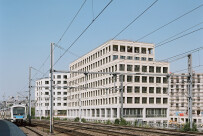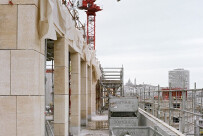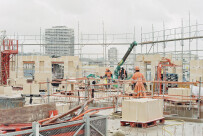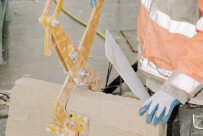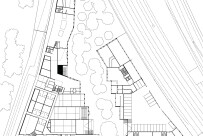Designed by urban planning agency TVK and landscape architect OLM for Linkcity, the largest site of the "Reinvent Paris 1" competition has come to life with the completion of the UCPA Sports Centre and the "l’îlot fertile," a mixed-use development including housing, youth hostel, student residences, offices, hotel, cultural centre, last-mile logistics zone, etc. The development was conceived as a large open garden of 7000 m2 and a breathing space in the heart of a dense city.
L’îlot fertile comprises four buildings situated at the edge of the site, on either side of a new road. The arrangement of these four buildings forms a strong morphology that reveals the large size and uniqueness of the garden at the heart of the project.
The building geometries were carefully determined and arranged to allow optimal light and air circulation while protecting from train noise. And the typology of each of the programs was considered in light of possible program reversibility to ensure the project's longevity.
The strength of the building formation is enhanced with the use of solid load-bearing Haussman stone. The unprecedented choice of stone on this scale was an exceptional opportunity to revitalize the industry and its expertise, but at this scale also a challenge. The four buildings, each with a unique shape, use 10,000 m² of stone, or more than 2,500 m³, a quantity unheard of today.
The site's history dates back to the Napoleon era and Paris' industrial development when the site was considered rural. Napoleon mandated the construction of the Ourcq and Saint-Denis canals and the formation of railways networks. The legacy of this is that in 1939, the 17-hectare Villette gasworks was constructed, where blast furnaces processed coal arriving from the north via train and canal. Since its closure in 1955, only the brick hall on the site bears witness to this industrial past, leaving the site as a wasteland in a key metropolitan location.
This changed at the end of 2016 with the Rosa Parks Station. A truly multimodal hub, the site is directly connected to the centre of Paris and the ring road via Port d'Aubervilliers. This advantageous access makes a strong case for the future of l’îlot fertile as a dynamic new urban centre in an area with few others.











